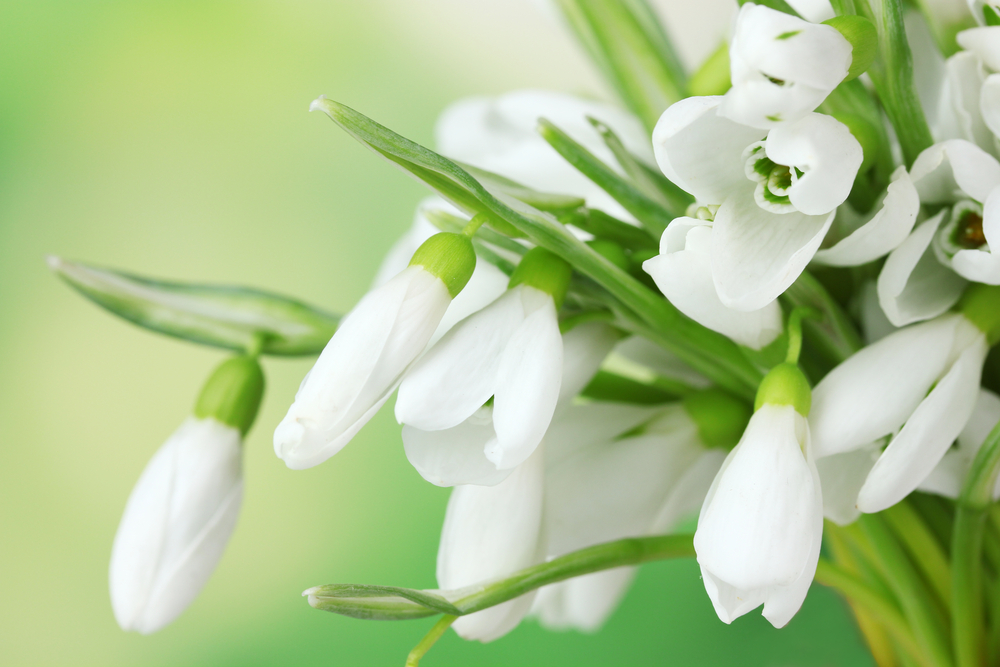
Bell-shaped flowers are a great way to brighten up any garden or home, and these 23 beautiful bell-shaped flowers will help you embellish your garden. With countless options available around the world, it’s important to get expert recommendations on the very best bell-shaped flowers. Read on to find out which bell-shaped flowers you should plant in your garden.
1. Amaryllis
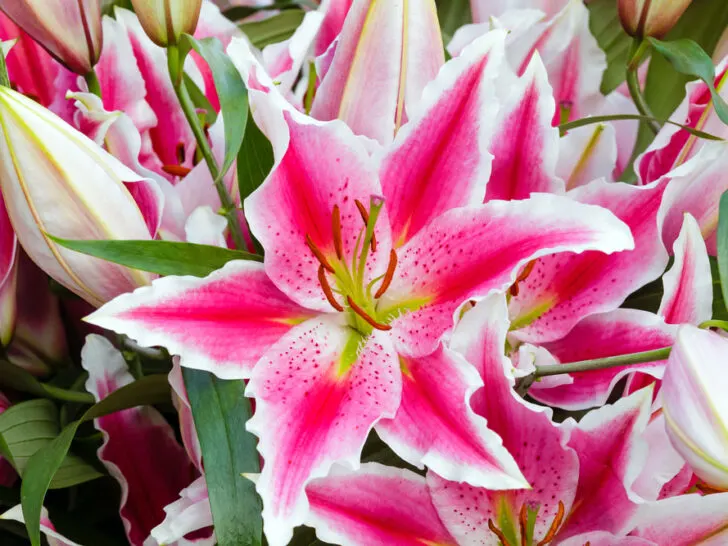
Also known as belladonna lilies, amaryllis flowers are bell-shaped flowers native to South America and South Africa. They do best in USDA hardiness zones 9 and 10 and are prized for their ability to bloom in the winter.
You can grow them as a way to brighten up your yard during the colder days of the year or schedule their planting so that they grow in the spring. These flowers symbolize beauty, love, strength, and determination. However, they are also used as the symbol for Huntington’s Disease.
2. Angel’s Trumpet
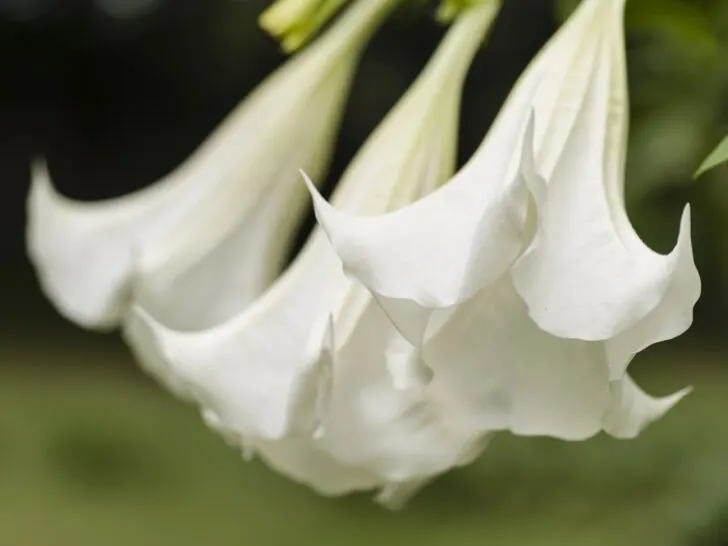
Named for the shape of the flowers, Angel’s Trumpet flowers grow on trees that grow to be 8 meters (26 feet) tall. However, you can also prune them to ensure they remain at shrub height.
The flowers themselves can grow to be up to 24 inches (60.96 cm) in length and have a sweet, attractive fragrance that makes them popular in gardens. However, you must take care if you have children or pets in the house, as these flowers are poisonous when ingested.
3. Bellflower
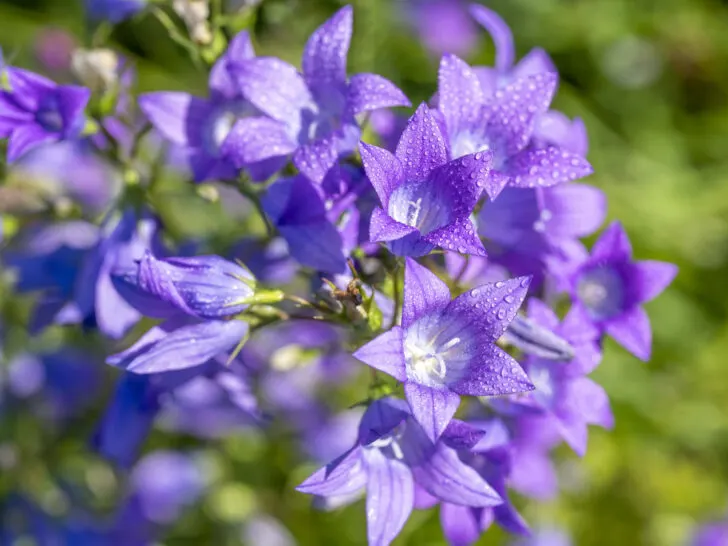
Balloon flowers are named for the way their buds look before they bloom. These easy-to-grow bell-shaped flowers are perennials native to Asia. They do best in USDA hardiness zones 3 to 8 and prefer rich, loamy soil and full sun to grow.
These flowers are linked to magic and divination, especially in Japan, where it was a popular flower in royal gardens. These flowers are symbolic of honesty and obedience, and in Victorian floriography, were a sign that you wanted an absent friend to return to your life.
4. Bells of Ireland
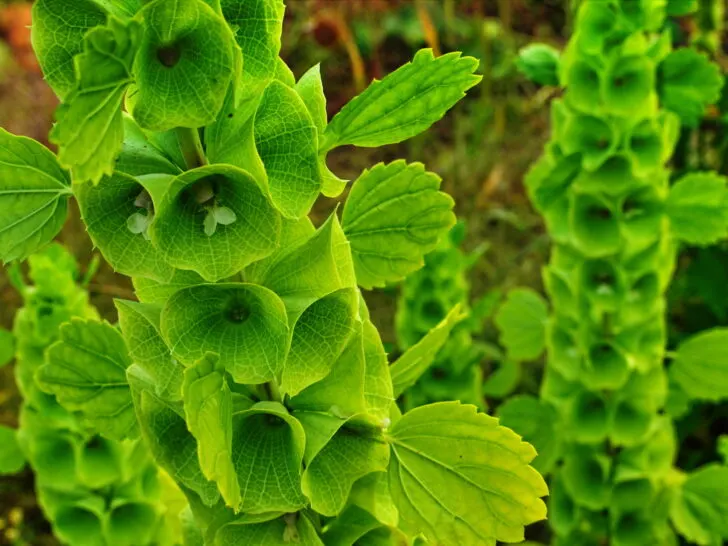
Despite their name, the Bells of Ireland are native to the Caucuses, Turkey, and Syria–not Ireland. These flowers are so named for their green color, resemblance to a lucky Irish symbol, and popularity in St. Patrick’s Day flower arrangements.
The bell shape of these flowers has also given it its other name: shellflower. These annual flowers have been grown since the 1500s and need the full sun to grow well. They do best in USDA hardiness zones 6 to 11 but can survive in hardiness zones 2 and over.
5. Canterbury Bells

A biennial flower, Canterbury bells are a great option if you’re looking to attract pollinators to your yard. These flowers are easy to grow and can reach 2-3 feet (60 -90 cm) in height. They do best in the full sun and USDA hardiness zones 4 to 10. While these plants are generally purple-hued, they are available in different colors, including pink, blue, and white.
6. Cardinal
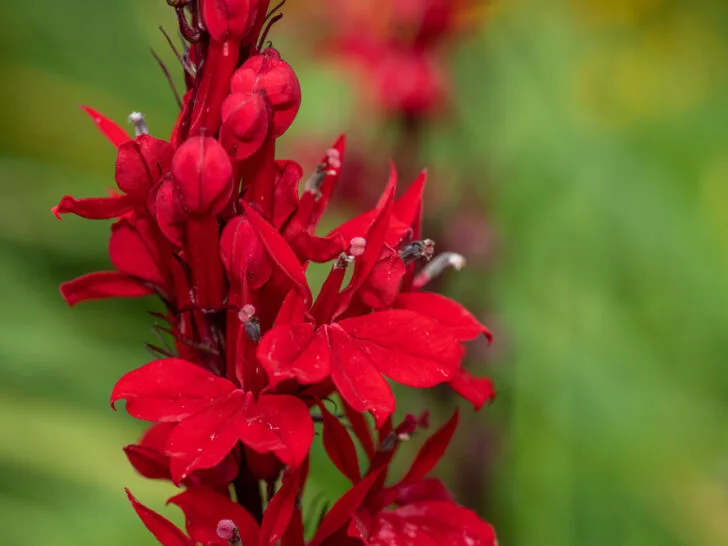
The cardinal is a perennial native to the United States and Mexico. These bright red flowers do best in hardiness zones 3 to 9. They prefer areas with full sun and moist soil and are usually found in wet spots like swamps and marshes.
These flowers get their name because their red color brings to mind the robes of a Roman Catholic cardinal. These plants are extremely popular with hummingbirds. However, care should be taken when growing because they are toxic to humans and pets when ingested.
7. Columbine
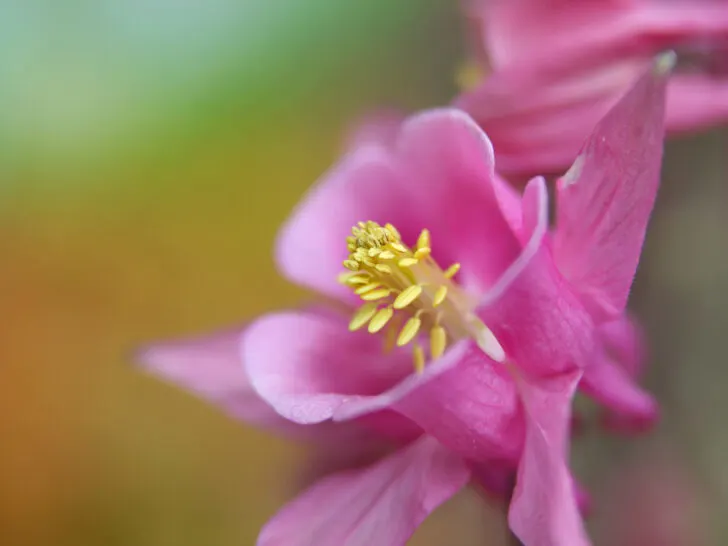
The columbine plant is a perennial that is available in a range of colors. The attractive nature of these bell-shaped flowers makes them popular in floral arrangements and as cut flowers. Additionally, as they are easy to grow, they are popular in gardens and yards.
Columbine flowers enjoy well-draining soil and full to partial sun, depending on the temperature. They don’t do well in high heat, so if you live in a hot area, give them partial sun rather than full sun.
8. Comfrey
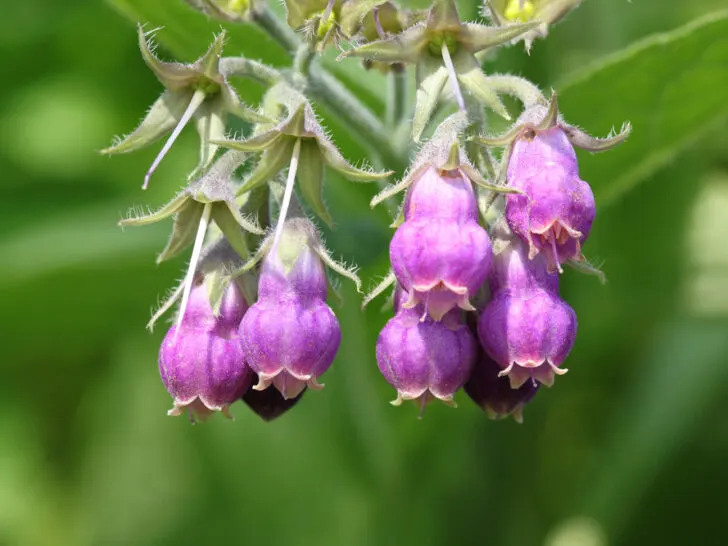
This perennial wildflower can be found growing along riverbanks and is native to Europe and Asia. These flowers are a good option in your yard if you’re looking to attract pollinators like bees and butterflies.
These plants prefer loamy soil and the full sun. They do best in USDA hardiness zones 4 to 8. However, like some other plants on this list, you should be careful if you have young children or pets in your home, as this plant can be toxic if ingested.
9. Common Bluebells

Sometimes called the English bluebell, the common bluebell is (as its name suggests) native to the British Isles and Europe. It does best in USDA hardiness zones 4 to 9 and requires partial sun to grow well.
These flowers symbolize humility and gratitude. They are easy to grow, but care should be taken around children and pets, as they can be toxic to both humans and animals when ingested.
10. Coral Bells
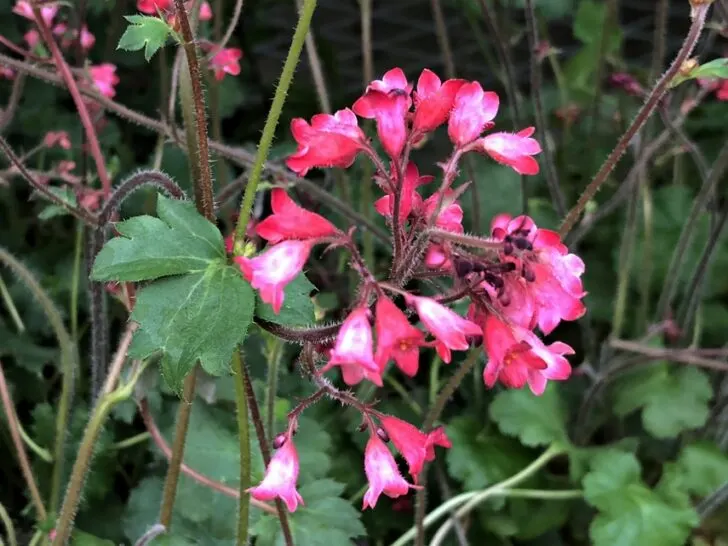
Also known as alum root and heucheras, coral bells are a perennial popular in gardens and as landscaping plants.
Aside from gorgeous, bell-shaped flowers–available in a variety of shades, including pink, red, and white–these plants also have beautiful, colorful foliage. In fact, it is often the foliage that makes them an attractive choice to plant in gardens, not their flowers.
11. Daffodil
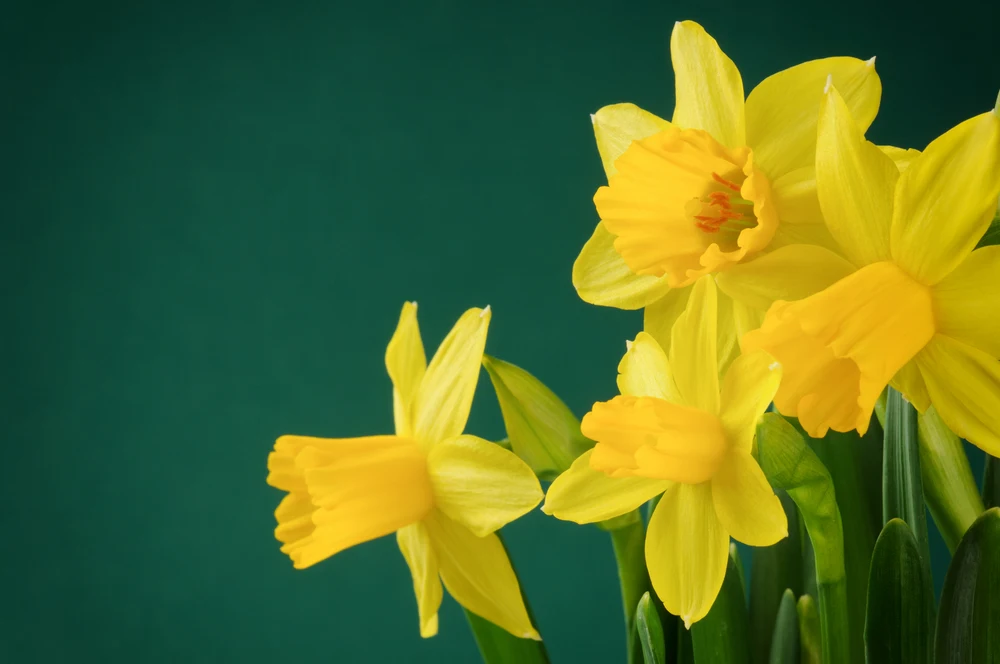
The March birth flower, daffodils, bloom in the late winter and spring and are best known for the yellow color of their flowers. However, aside from yellow daffodils, you can also find these flowers in shades of orange, white, and pink.
These cheerful flowers symbolize new beginnings, forgiveness, and creativity. They’re well-known for being the topic of the poem “I Wandered Lonely as a Cloud” by William Wordsworth.
12. Four O’Clock

Also known as the Marvel of Peru, the Four O’Clock (scientific name Mirabilis jalapa) is native to, as its name implies, South America. These gorgeous, bell-shaped flowers do best in USDA hardiness zones 9 to 11.
They are a fast-growing, easy-to-maintain plant given its common name because the blooms generally open in the late afternoon, around 4 p.m. That said, you should be careful with these plants because they are toxic to humans and animals when consumed.
13. Foxglove
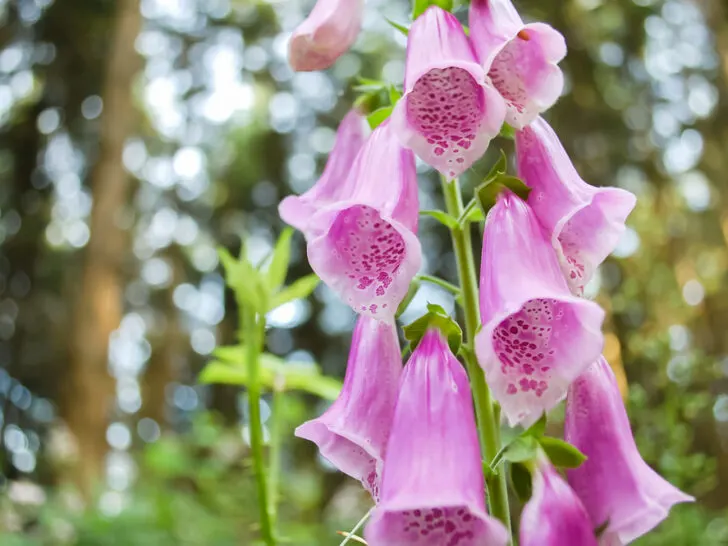
Foxglove flowers are bell-shaped flowers that grow on vertical flower spikes, making them attractive landscaping plants. These plants are members of the digitalis genus and are native to Europe and the Mediterranean.
They do best in USDA hardiness zones 4 to 10, with full sun (though you may need to change that to partial sun, depending on how hot the summer is). Keep in mind that, while they are good at attracting hummingbirds, all parts of foxglove are toxic to humans and animals if consumed.
14. Gentians
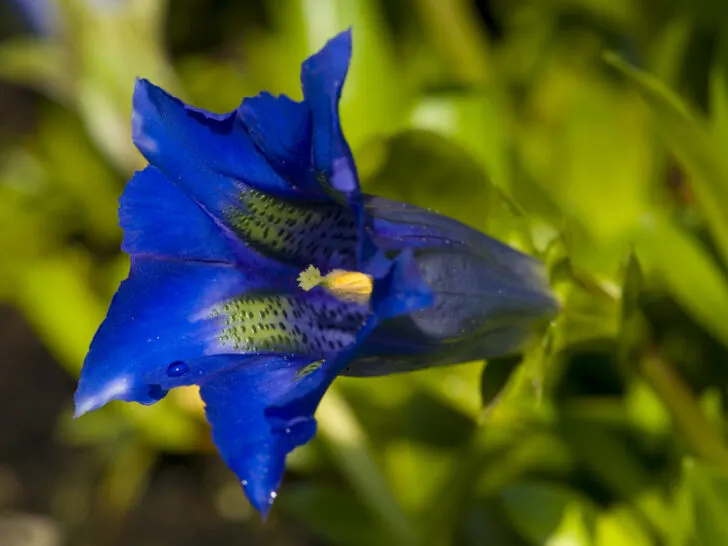
Though gentians are generally blue, they are available in a range of colors, including purple, white, and red. These wildflowers grow around the world, and the Gentiana genus contains over 400 species.
Some types of these flowers will only bloom when exposed to the right pollinators. However, given their pollinators include flies, bees, and birds, you don’t need to worry about your flowers not blooming.
15. Hollyhock

Like foxglove, hollyhock flowers grow on vertical spikes, making them an attractive landscaping option if you want to add some height to your garden. These perennials are available in a variety of colors, including pink, purple, blue, and black. These flowers symbolize abundance, fertility, and ambition.
16. Japanese Primrose
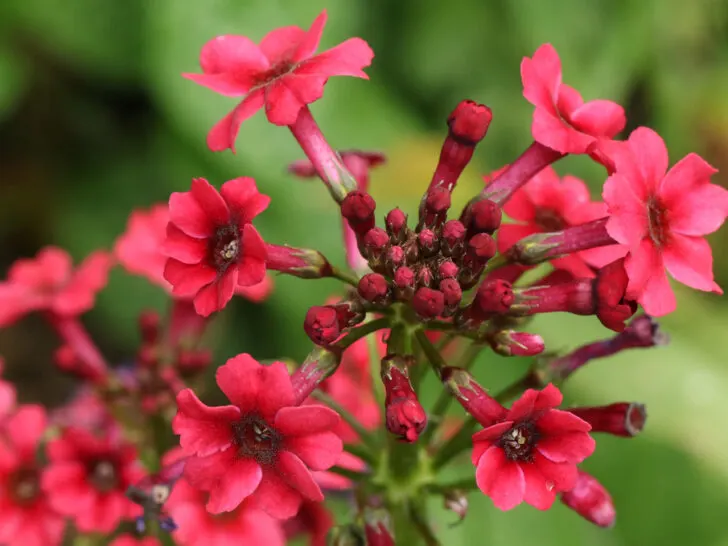
Also known as the Japanese cowslip, valley red, and Queen of the primroses, the Japanese primrose (Primula japonica) is a water-loving plant that does best in USDA hardiness zones 4 to 8.
Because it enjoys moist soil, it can be found near water like streams and rivers. It can be grown in warmer weather but needs to be kept well-watered, and the soil needs to stay evenly moist.
17. Kaffir Lily
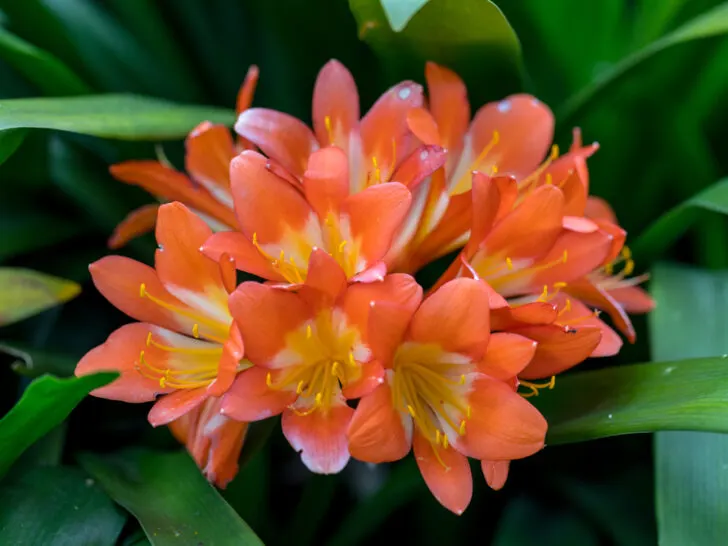
Also known as the Clivia lily or the bush lily, the Kaffir lily is not a true lily. It is a member of the genus Clivia rather than the genus Lilium and is a member of the amaryllis family.
These flowers are native to Africa (South Africa and Eswatini). They bloom in the winter, making them a popular option in gardens that are looking to add a little color in the cooler months of the year. These plants do best in USDA hardiness zones 9 and 10.
18. Lily of the Valley
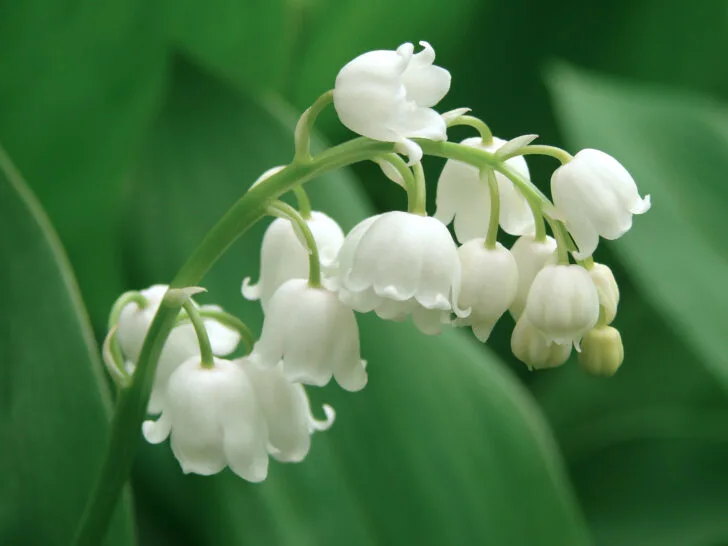
The lily of the valley produces beautiful, bell-shaped flowers that were the favorite of Queen Elizabeth II. Despite its name, it isn’t a true lily but a member of the asparagus family.
This gorgeous flower does best in USDA hardiness zones 3 to 8 and blooms in the spring. In Victorian floriography, it symbolized a return to happiness.
19. Morning Glories
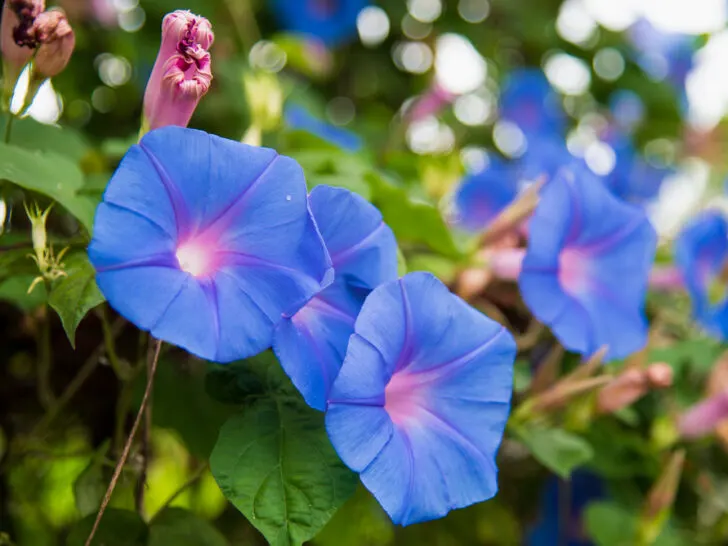
The morning glory has bell-shaped flowers that unfurl (as its name implies) in the morning. These beautiful and delicate plants do best in USDA hardiness zones 2 to 11, being able to tolerate both cold and warm weather. The colorful flowers are wonderfully fragrant and are great at attracting beneficial pollinators like birds and butterflies.
20. Snowdrops
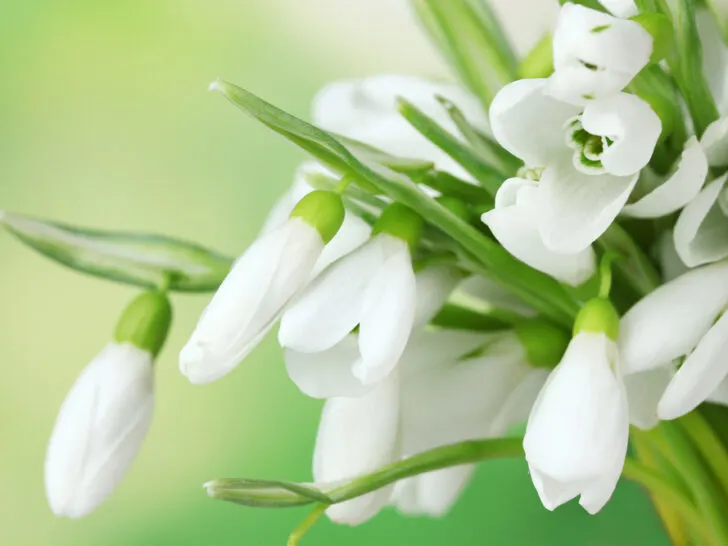
Also known as Galanthus, snowdrops are gorgeous, bell-shaped white flowers that, as their name suggests, bloom in the winter (and early spring). These flowers may look delicate, but they are deceptively hardy and do best in USDA hardiness zones 3 to 7. They require well-draining soil and partial shade and are relatively easy to care for.
21. Trumpet Vine
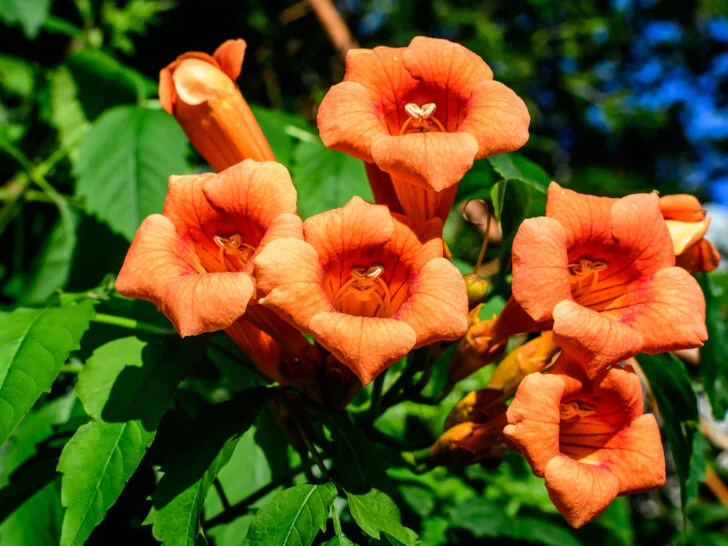
Native to North America, the trumpet vine is a fast-growing vine that produces beautiful bell-shaped flowers in warm colors, including orange, red, and yellow. They do best in USDA hardiness zones 4 to 9 and require full to partial sun.
Also known as a trumpet creeper and hummingbird vine, as its name suggests, this plant is a vine that grows beautifully on walls. This plant is a symbol of fresh starts.
22. Twin Flower
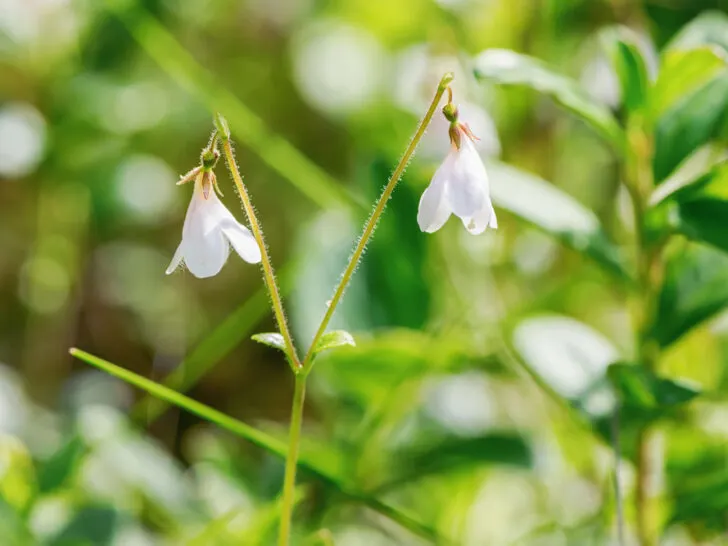
Sometimes spelled as twinflower, the twin flower (Linnaea borealis) is so named because each stem produces two flowers. These wildflowers are generally pinkish in color, and the plant also features evergreen leaves.
Twin flowers do best in USDA hardiness zones 7 to 11. The scientific name of the flower is a reference to Swedish botanist Carl Linnaeus, who created binominal nomenclature and favored the flowers.
23. White Mountain Heather
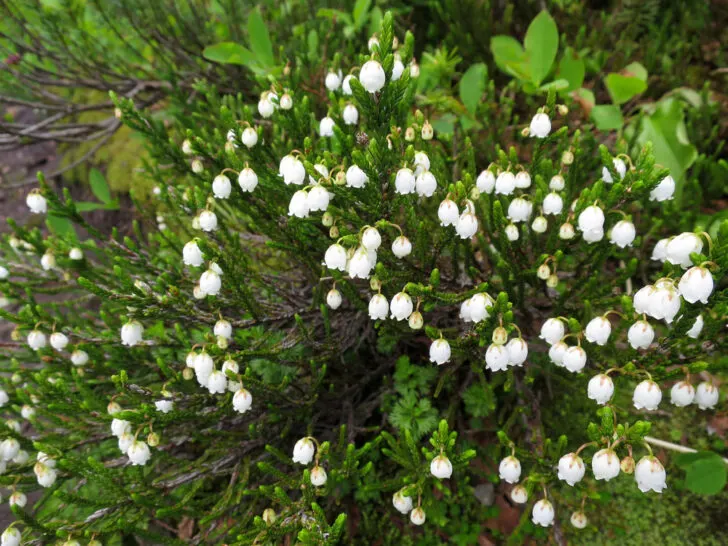
Also known as western moss heather, white mountain heather is a plant native to North America. As its name suggests, it grows on mountains and features white flowers with red bractlets.
These flowers bloom in the summer and do best in USDA hardiness zones 3 to 8. They prefer full sun and, like other members of the heather family (Ericaceae), symbolize protection and good luck.
Conclusion
These gorgeous bell-shaped flowers are sure to brighten up any garden. No matter whether you’re looking for an annual or a perennial, a shrub or a vine, there’s a plant with a bell-shaped flower on this list for everyone.
Other Articles You May Also Be Interested In
20 Pretty Types of Bellflowers
